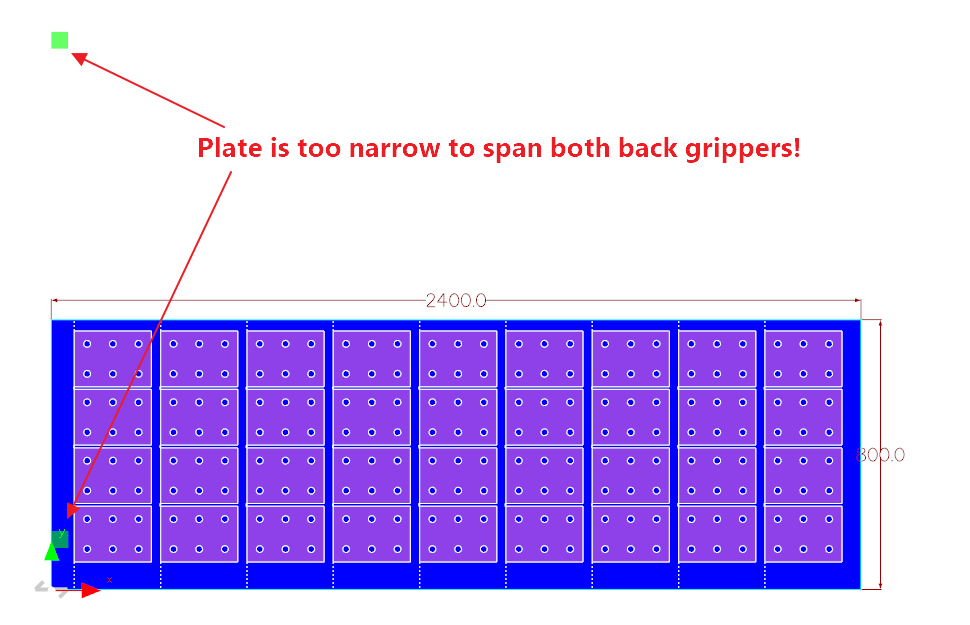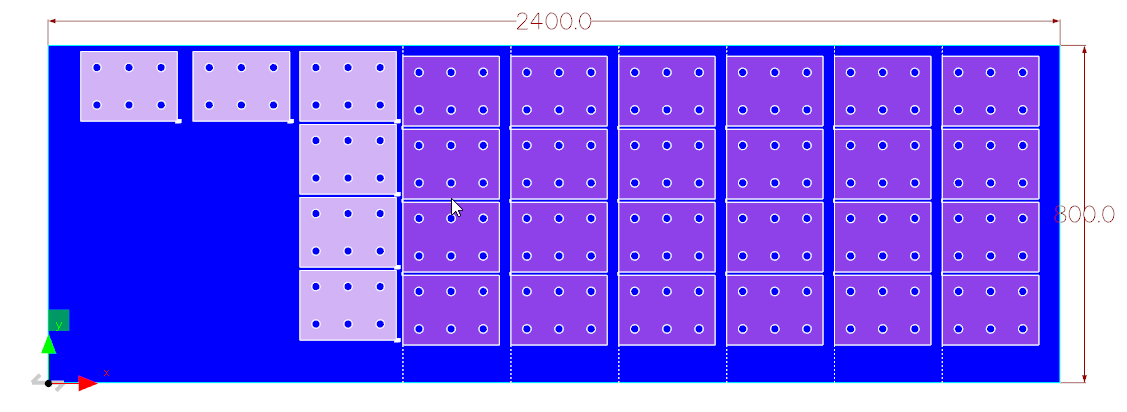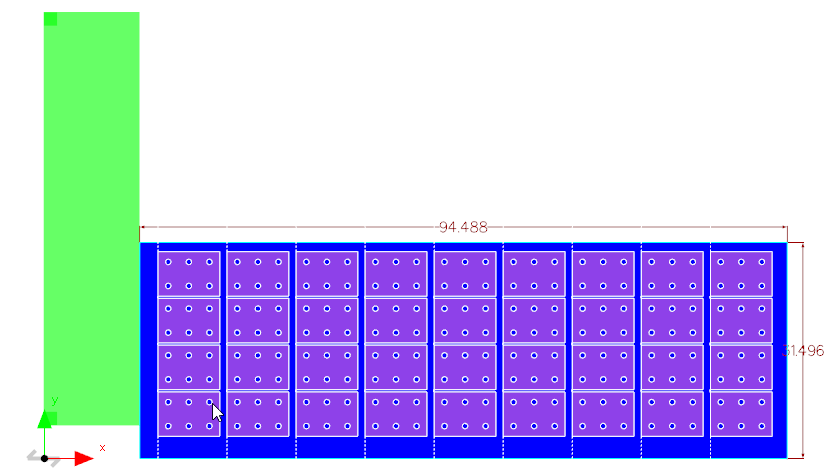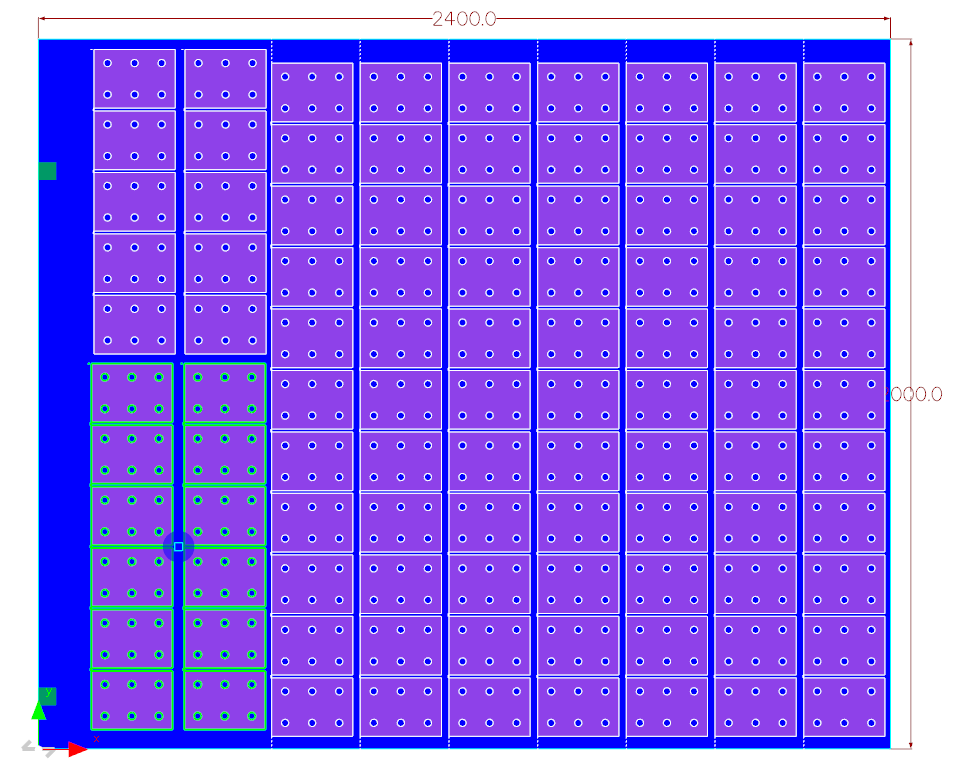In some situations on gripper machines it may be necessary to clamp a strip of additional plate wider than the plate to be cut, and weld this to the back edge of the plate to be cut. This is called a GripStrip.
The welds should be strong enough to reliably push and pull the plate to be cut during the processing phase, and is assumed to span all back grippers.
Gripper based machines are designed to work with plates wide enough to span at least two back grippers, this is a work-around enabling narrower plates to be cut.
Reasons to use a GripStrip:
1.The plate to be cut is too narrow to span multiple back grippers. This may result in the single active back gripper having to disengage near the back of the plate, resulting in side-grippers only holding the plate, which is generally undesirable, especially if the plate is thick.
2.The plate is wide, but full width cuts are needed cross the back edge of the plate. Normally when cutting small parts they can be sequenced in such a way that one back gripper is always engaged; however there may be a need to cut very large parts which occupy most of the plate. This will result in both back grippers ungripping.
template
This is the width (X-axis dimension) of Grip Strip in use. It is assumed to span all back grippers, so there is no need to enter a "height" (Y-axis dimension). The default value is 0 (no GripStrip in use). If set to any other value Primecut will render a green rectangle representative of the GripStrip to the left of the plate, and effectively transforms all plate geometry and processing to the right.
Normally the GripStrip Width is 0 (via Plate Properties), meaning a GripStrip is not in use:

A suitable minimum width for this strip is 350mm, or approximately 14". This should generally enable the back grippers to clear all processing on the back of the plate, however the exact minimum value will depend on the configuration of your machine.
GripStrip Side Grip Plate Only
The default for this is True. When checked, Gripper planning will not side grip the GripStrip, all side gripper activity will be forward of the GripStrip on the plate to be cut itself. Visually, the gripStrip is shown on-screen starting slightly above the origin and above the side grippers; however there is no practical need for it to start above the side grippers; this is just a representation used for gripper planning.
Consider the following nest. In this case a Chain Crop is being used to cut and drill an array of parts on small plate, which is only wide enough to span the first back gripper.

We cannot cut the leftmost parts on this plate, because the only back gripper there must disengage. Even if we were a little smarter, not chaining or cropping the leftmost parts, this is about the best we can do:

Again, the fundamental problem is that the machine is designed to work with larger plates which span the back grippers. Using a GripStrip however, we are able to cut (and crop) the entire plate:

Plate is then displayed as:

NOTE If this plate was wider, we would be able to nest and sequence it to fully utilize the plate, for example

Full and effecient use of a plate spanning multiple back grippers:
* Dont Crop the left most columns
* split these chains in two so one back gripper can always engage
* Cut the selected chains first, while there is room for side grippers to improve holding.
* Cut the rest sequenced right to left